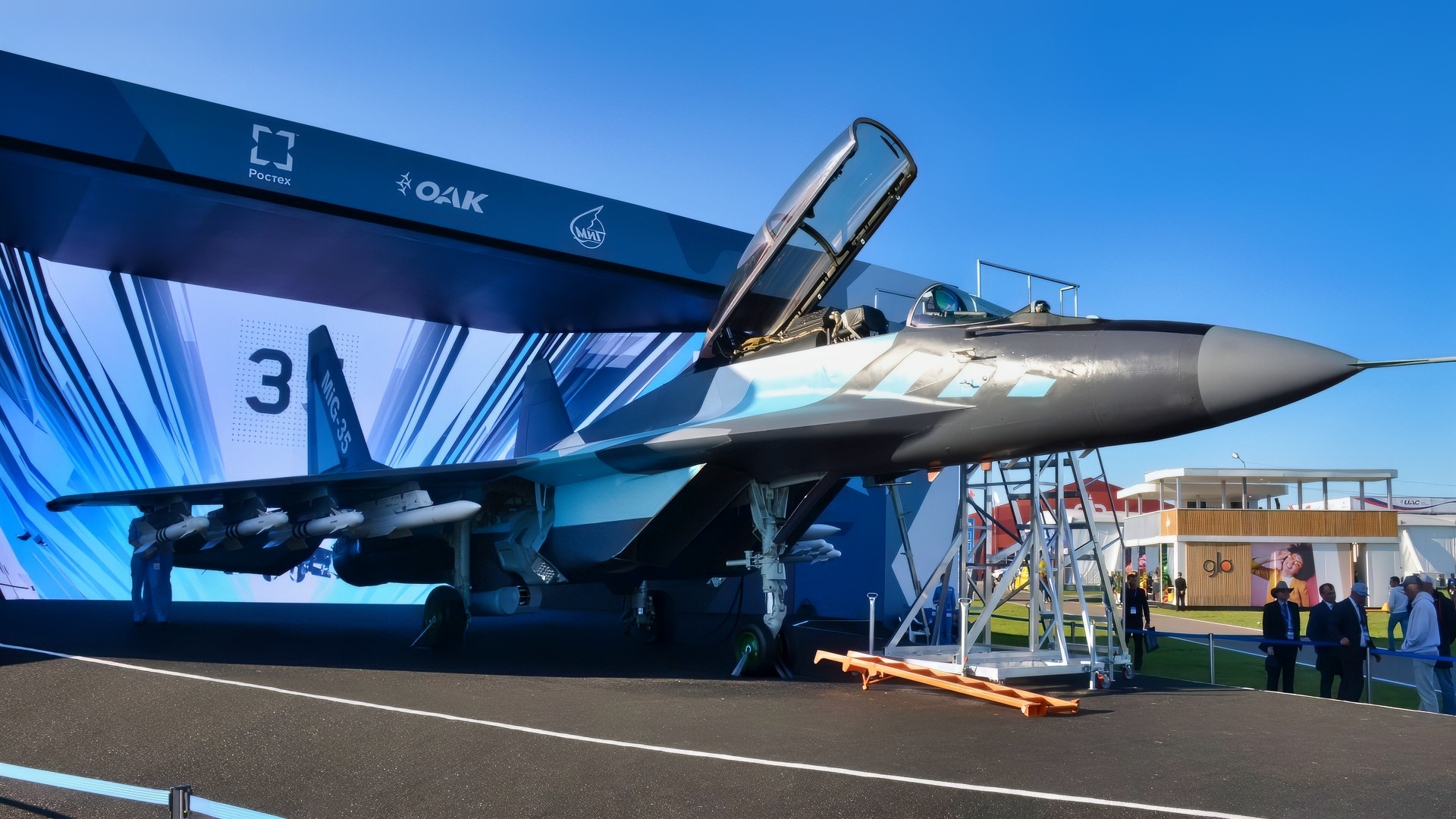Key Points and Summary – Russia’s MiG-35 fighter set out to fix the MiG-29 Fulcrum’s weaknesses: more fuel, a digital cockpit, modern weapons, and a new radar.
-The airframe arrived; the avionics did not, at least not in stable, series-production form.
-Small domestic buys and export headwinds kept unit costs high and learning curves slow, while Sukhoi twins soaked up money and attention. Sanctions and wartime priorities further delayed sensors and deliveries.
-The result is a competent, compact multirole that lacks a signature advantage.
If Russia locks a credible baseline and buys in squadron lots, the MiG-35 can still serve as a practical QRA/swing-role fighter. Without that, it remains an almost-ran.
MiG-35: Russia’s Almost-New Fighter That Can’t Catch A Break
For Moscow, a modernized MiG-29 wasn’t just about nostalgia for the Fulcrum.
It was about fleet balance and export reality. Sukhoi’s larger twins—the Su-30/34/35 family and then Su-57—dominated procurement, but Russia still needed a lighter, cheaper-to-operate multirole fighter to backfill air-defense regiments, sit quick-reaction alert at dispersed bases, and give foreign customers an option below the price, range, and runway demands of the big Sukhois.
On paper the answer was obvious: evolve the MiG-29 into something with more fuel, stronger sensors, and modern weapons integration—a bridge from legacy Fulcrums to whatever sixth-gen concepts arrive later. That bridge is the MiG-35.
The concept promised three wins. First, commonality: leverage MiG-29 manufacturing know-how, ground gear, and pilot familiarity. Second, cost and logistics: a lighter twin that could work from shorter runways and smaller bases—attributes many export air arms value. Third, political portfolio: keeping the MiG design house viable so Russia doesn’t become a one-brand fighter producer.
From Fulcrum To “Fulcrum-F”: What The MiG-35 Actually Is
The MiG-35 is best understood as a deep rebuild of the later-model MiG-29s—especially the MiG-29M/M2 and carrier-capable MiG-29K/KUB—rather than as a blank-sheet airframe. The changes concentrate where the original Fulcrum was weakest:
Fuel And Range. A redesigned center section and internal volume give the MiG-35 the endurance the early Fulcrums never had, reducing the need to hang fuel tanks on every sortie and widening the mission set.
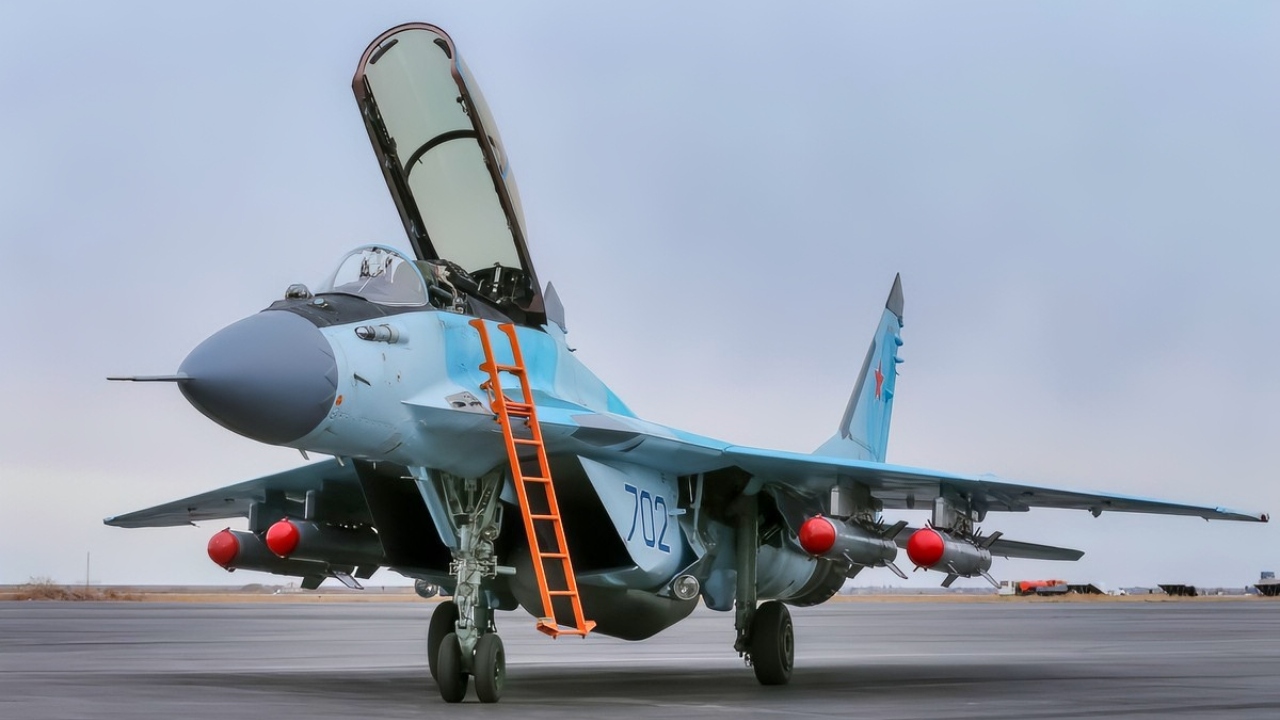
MiG-35 On the Runway. Image Credit: Creative Commons.
Avionics And Cockpit. Glass displays, a modern mission computer, digital stores management, and an updated defensive-aids suite bring the pilot’s workload into the current decade and allow simultaneous multi-role tasking—not just a classic point-defense sprint.
Radar And Sensors. The program’s headline ambition has always been a new electronically scanned radar (with an AESA goal) paired to an IRST and helmet-cueing—so a small four-ship can see, shoot, and support with fewer emissions.
Engines. Updated RD-33-series turbofans improve reliability and smokeless operation relative to early Fulcrums, with a modest thrust bump.
Weapons. Full integration of R-77-class BVRAAMs, modern short-range missiles with off-boresight cueing, guided bombs, and anti-ship/anti-radar options was meant to put the jet on par with contemporary 4.5-gen peers in weapon employment envelope, even if not in stealth.
In short: the MiG-35 set out to be the most capable Fulcrum that still feels like a Fulcrum—nimble, compact, and cheaper to run than a big Su-30SM2, but finally long-legged and digitally competent.
Where The Timeline Went Sideways
The airframe matured faster than the electronics and budgets behind it. The MiG-35 was public by the late 2000s and re-presented in the late 2010s, but domestic orders stayed small, stretching cash flow and slowing the ramp. That matters, because avionics like an AESA radar only become affordable and reliable when you build them in real numbers.
At the same time, Sukhoi’s line kept winning home and export business. Every extra Su-30SM/35 contract meant suppliers prioritized that ecosystem. Meanwhile, sanctions and supply-chain frictions after 2014—and more after 2022—made it harder to source certain microelectronics and manufacturing tools, exactly the inputs a new radar and modern EW suite depend on.
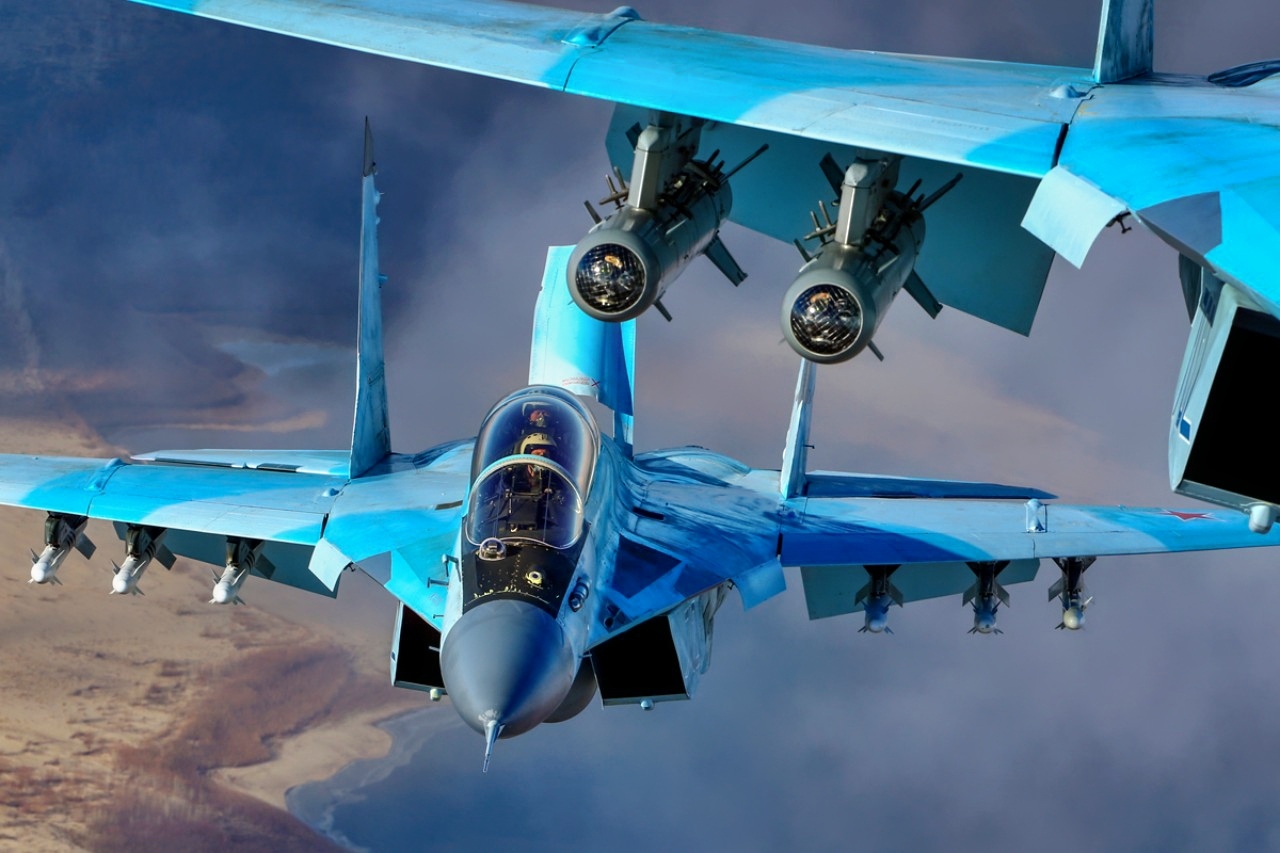
MiG-35 Fighters from Russia. Image Credit: Creative Commons.
The result: a fighter with a decent airframe that couldn’t consistently field the marquee sensor set its brochures implied.
Problems You Can’t Hand-Wave Away
The Radar Gap: From day one the MiG-35’s sales pitch leaned on an active electronically scanned array. In practice, AESA availability lagged, with test articles appearing but series-production aircraft often fielding mechanically scanned sets or interim solutions. That gap is not cosmetic. Modern BVR tactics depend on track quality, resistance to jamming, low probability of intercept, and graceful degradation—areas where AESAs tend to outperform legacy arrays. Without a stable AESA in quantity, the MiG-35’s sensor credibility stalls against peers that solved this years ago.
The “Why Not A Sukhoi?” Problem
Domestic buyers face a blunt trade: a small twin with updated systems, or a larger Su-30SM2/35 that already has long range, massive payload, and proven avionics, with the logistics pipeline fully humming. For air-defense regiments tasked with patrolling big distances, more fuel and two-crew options are persuasive. The MiG-35’s promised operating-cost advantage must be large to offset those Sukhoi benefits—and the program hasn’t convincingly shown that delta at squadron scale.
Export Timing And Trust
The MiG-35 arrived at export desks just as many swing-market customers made big, multi-decade decisions—India bought Rafales, Egypt went for MiG-29M/M2s (a cousin, but not the MiG-35), and others doubled down on F-16V, Gripen E, or second-hand F-16/Eurofighter fleets. To prise open that market, the MiG-35 needed signature wins early. Instead, it offered modest numbers at home and evolving specs abroad. In a world where training, spares, and financing matter as much as the jet, “trust us, it’s coming” is a hard sell.
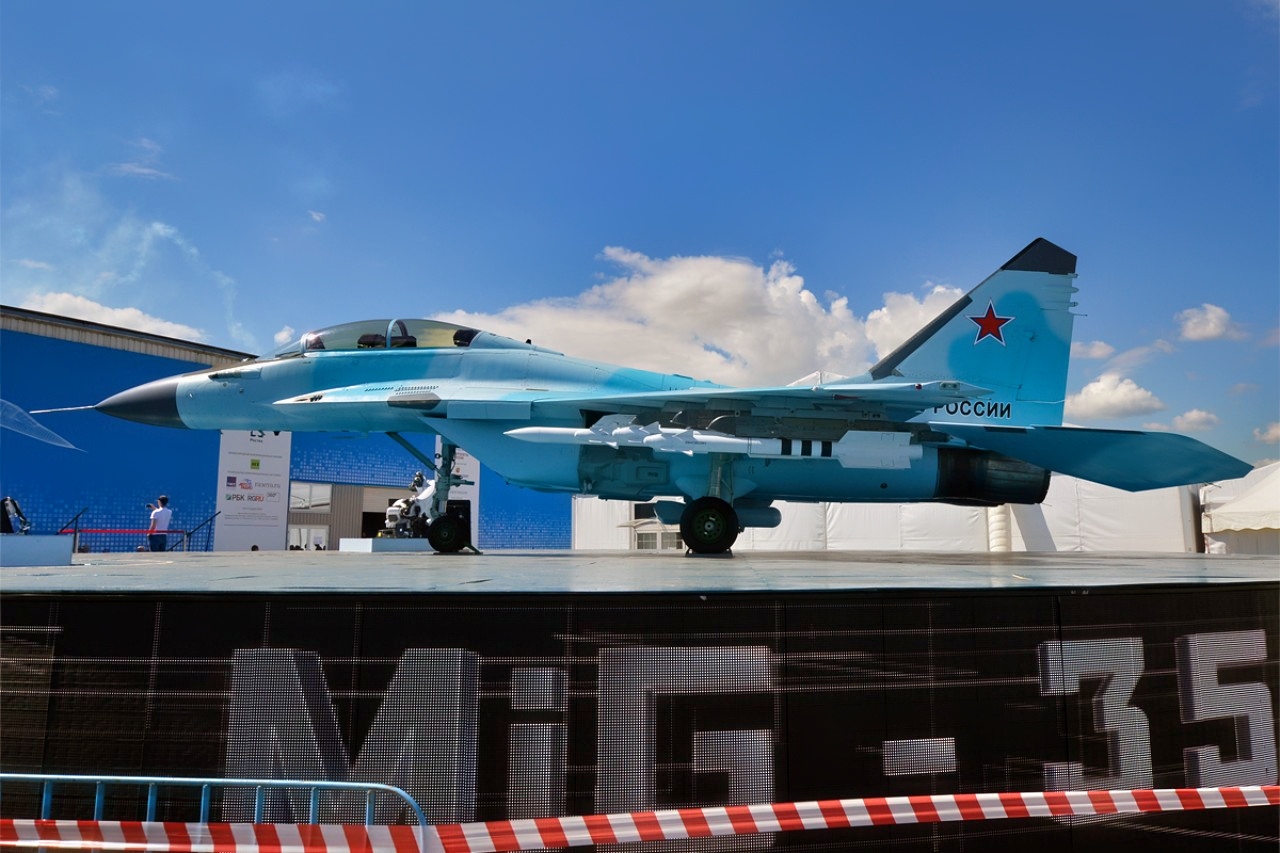
MiG-35. Image Credit: Creative Commons.
Production Pace And Unit Cost
Low-rate domestic buys keep a design line alive, but they also keep unit costs high and stretch learning curves. That feeds a loop: fewer airframes mean slower avionics maturation and higher per-jet price, which in turn makes big customers hesitate. Breaking that loop usually requires a major anchor order or a sovereign financing package for an export customer—neither materialized at the scale the program needed.
The War Changed Priorities
The full-scale war in Ukraine shifted Russian procurement toward munitions, ISR, and sustaining existing force structures. Where new-build fighters did move, the pressure favored types already in large service, not small, parallel fleets. That’s not a technical verdict on the MiG-35 so much as a budget triage reality in wartime.
What The Jet Still Gets Right
Not everything about the MiG-35 disappoints. The airframe-plus-systems package—more fuel than early Fulcrums, modern cockpit, digital weapons—fixes the classic MiG-29 pain points. As a QRA interceptor covering dense airspace from shorter runways, or as a swing-role two-seater doing air policing, interdiction, and maritime patrol near home waters, the MiG-35 is perfectly serviceable. For air arms that prize ease of basing and familiar pilot feel over sheer range, the type still makes sense on paper—if the sensor suite and sustainment package mature.
The Future: Three Paths, And A Warning
Path 1: A Small Domestic Fleet That Finally Stabilizes. One realistic outcome is a limited but steady Russian fleet—a few squadrons replacing worn Fulcrums at bases where a smaller footprint and runway flexibility matter. Under this model, industry locks a baseline configuration (even without a headline AESA), wrings reliability out of what’s fielded, and the Air Force gets a known-quantity workhorse for QRA and local strike. It won’t wow, but it keeps MiG’s line alive and gives the force a lighter twin that isn’t a Sukhoi.
Path 2: The “Revival”—If The Sensor Stack Finally Lands. Periodically, officials signal a revival push: fresh cockpit, improved EW, new radar front-end, and better weapons interfaces to borrow some of the Su-57’s digital DNA. If—and it’s a genuine if—a domestic AESA arrives in numbers with exportable modes, and if electronic-warfare and data-link suites catch up, the MiG-35 could reposition as a budget modernizer for states that can’t afford Western 4.5-gen jets and don’t want to wait for clean-sheet Russian designs. That would still require state financing and industrial support to get out of low-rate limbo.
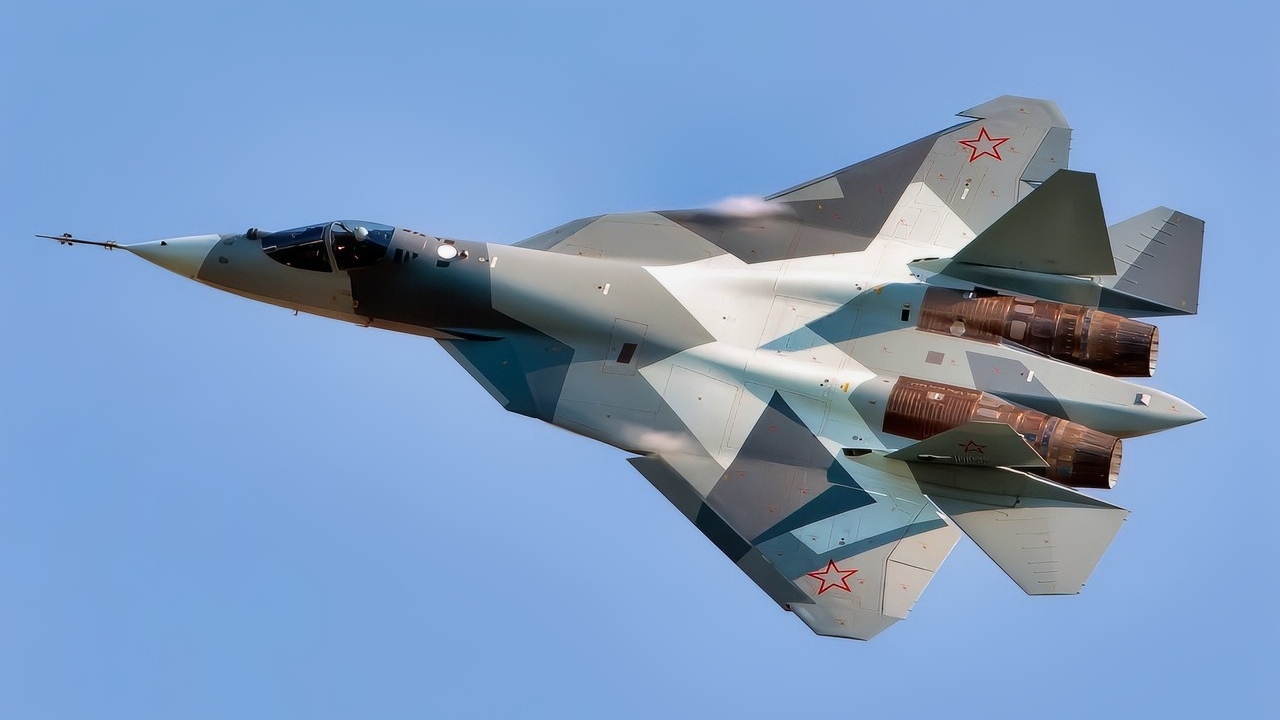
Su-57 Felon Fighter from Russia. Image Credit: Creative Commons.
Path 3: An Export Niche, But Only If Financing Flows. A handful of air forces could use a compact twin-engine multirole to backfill aging fleets and hedge sanctions risk. For them, the deciding factors won’t be airshow aerobatics; they’ll be credit terms, training pipelines, and spares guarantees.
If Russia pairs the MiG-35 with attractive financing, local assembly, and assured support, a small export niche is still plausible. Without those, the market will continue gravitating to F-16V upgrades, lightly used Eurofighters, and Rafales funded by sovereign lenders.
The Warning
All three futures hinge on avionics credibility. In 2025 and beyond, buyers judge fighters by sensors, networks, and weapons autonomy as much as by thrust-to-weight. If the MiG-35 cannot consistently deliver a modern radar/EW suite backed by dependable supply of processors, TR modules, and software updates, no amount of airframe competence will rescue it.
What The Program Taught—And What MiG Must Change
Don’t over-promise the headline technology. Building a fighter around an AESA that isn’t in series production is a recipe for disappointment. Lock the Build 1 spec, deliver it, and spiral.
Anchor orders matter more than brochures. A squadron-scale domestic buy early in a program does more to convince export customers than three demonstrators and a press conference.
Open the ecosystem. If sanctions wall off advanced microelectronics, design to what you can build, not what you wish you could import. That may mean fewer modes at first—but reliable ones.
Play the basing game. Lean into what a compact twin can do—shorter runways, dispersed ops, and high-tempo QRA—and sell that, not long-range strike someone else already does better.
Verdict on the MiG-35
The MiG-35 was supposed to be the modern Fulcrum that finally grew up: longer legs, contemporary sensors, real multirole teeth—priced and sized for the many air forces that don’t need a heavyweight Sukhoi. Instead, it became a case study in how sensors, supply chains, and schedules can ambush a competent airframe.
The jet itself isn’t the problem; the program is. Without a stable radar/EW suite in numbers and an anchor customer willing to buy more than a token batch, the MiG-35 will remain an almost-new fighter—good enough to brief, good enough to fly, but not good enough to win the market.
Suppose Russia can lock a credible baseline, finance a modest block buy at home, and prove it can sustain the avionics it advertises. In that case, the MiG-35 still has a narrow path to relevance as a workmanlike multirole in the 2030s.
If not, it will pass into history as a reminder that in modern combat aviation, software, sensors, and production cadence beat airshow maneuvers every time.
About the Author: Harry J. Kazianis
Harry J. Kazianis (@Grecianformula) is Editor-In-Chief and President of National Security Journal. He was the former Senior Director of National Security Affairs at the Center for the National Interest (CFTNI), a foreign policy think tank founded by Richard Nixon based in Washington, DC. Harry has over a decade of experience in think tanks and national security publishing. His ideas have been published in the NY Times, The Washington Post, The Wall Street Journal, CNN, and many other outlets worldwide. He has held positions at CSIS, the Heritage Foundation, the University of Nottingham, and several other institutions related to national security research and studies. He is the former Executive Editor of the National Interest and the Diplomat. He holds a Master’s degree focusing on international affairs from Harvard University.
More Military
B-52J vs. B-21 Raider: The Air Force Might Have a Bomber Problem
F-35 Who? The ‘Super’ Eurofighter Typhoon Is On the Way
The B-21 Raider Will Transform the U.S. Military
SR-72 Darkstar Might Be Coming Soon…
The B-2A Spirit Stealth Bomber Has a Message for Russia and China


